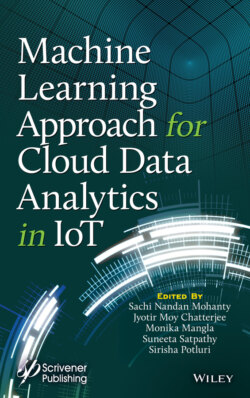Читать книгу Machine Learning Approach for Cloud Data Analytics in IoT - Группа авторов - Страница 87
3.3.2 Use Cases
ОглавлениеAs discussed earlier, ML has been employed in several leading retail industries to sustain and excel in this cut-throat competing business world. Traditionally, managers would have predicted sales based on various factors like brand quality, promotion, and discount. Managers used to implement a series of regressions to predict the sales volume. The efficiency of such an approach heavily relied on the capability of the human brain. Traditional methods even led to inefficient forecasting. This inefficiency has been completely handled by incorporating ML approaches. In this subsection, authors discuss few popular use cases of ML employment in retail industries.
According to [26], a ML model is devised to predict sales in response to promotion by a multinational retailer. An efficient model would enable to garner a huge leap in sales. Here, the retail company wanted to have an idea about the strongly and weakly performing products in the store. In the model, the company used several variables like discount, promotion duration, size of promotional advertisement, placement of products, and seasonality, among others. It was observed in [26] that a traditional method which involved several data analysts and a series of linear regression models predicted the results with 30% to 35% error rate. This error rate was brought down in the first attempt to 24% using ML model, and the error rate is expected to further reduce over time. Thus, integration of ML approaches in prediction models provided exciting and attractive results. It helped to curb the cost involved in generous promotions and maintaining inventory in the warehouse. Using the similar predictive model, Target Corp. also observed the growth of 15%–30% in revenue.
A renowned retailer Walmart has also incorporated technologies to understand customers’ needs and act accordingly. The company employed facial recognition software to understand the experience level (frustration, happiness, and satisfaction) during checkout. It also triggers an alert for customer representatives to approach frustrated customers in order to provide better customer service. Usage of this facial recognition model eliminates the need of maintaining expensive and appropriate staff for providing enhanced customer service.
Amazon has been proudly employing ML for predictive data analytics to enhance its sales. Amazon has garnered its outstanding benefit for demand prediction in business management [27]. It has also filed a patent for the process of its anticipatory shipping that predicts sales of a product in a particular region or city. Amazon uses this information to store the targeted products in nearest warehouses. It is also planning to deliver the product to the customers using drones in minimum time thus excelling the experience of shopping.
Authors in [28] have presented the implementation of predictive analytics in the retail banking sector. Here, authors claim that predictive analytics through traditional tools necessitates a specialized skill in statistics and mathematics. However, the same can be performed much easily in R, a language that includes around 4,000 algorithms of ML ranging from basic regression model to advanced model. In the banking sector, predictive analytics can be used to estimate churning rate and product propensity.
